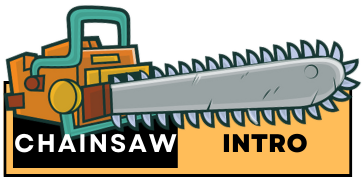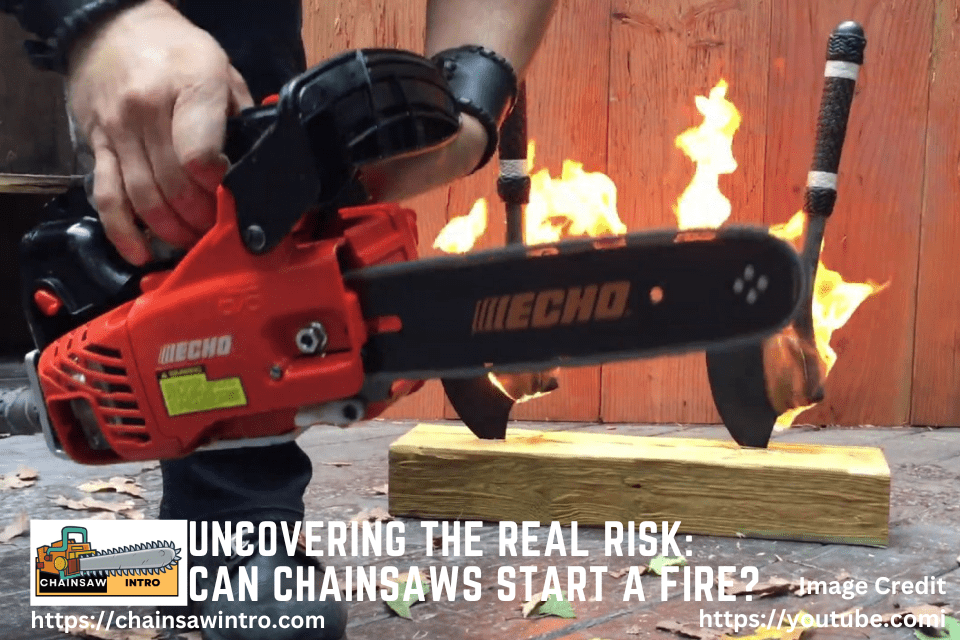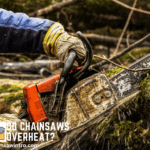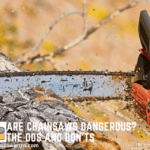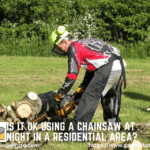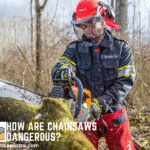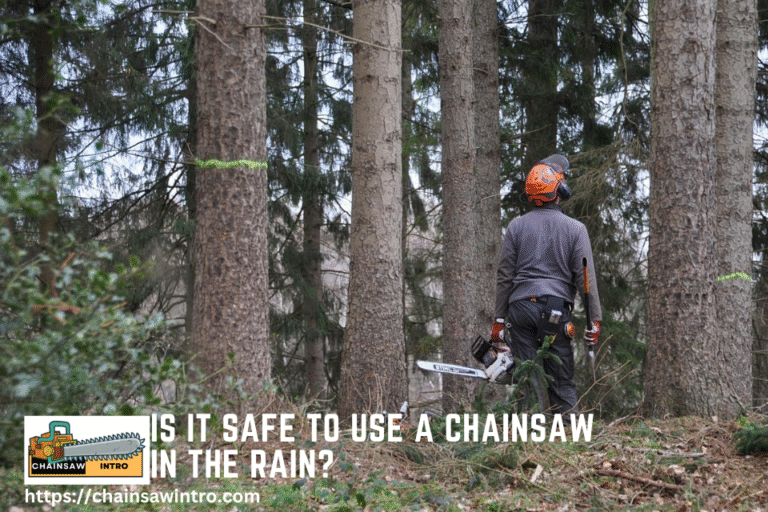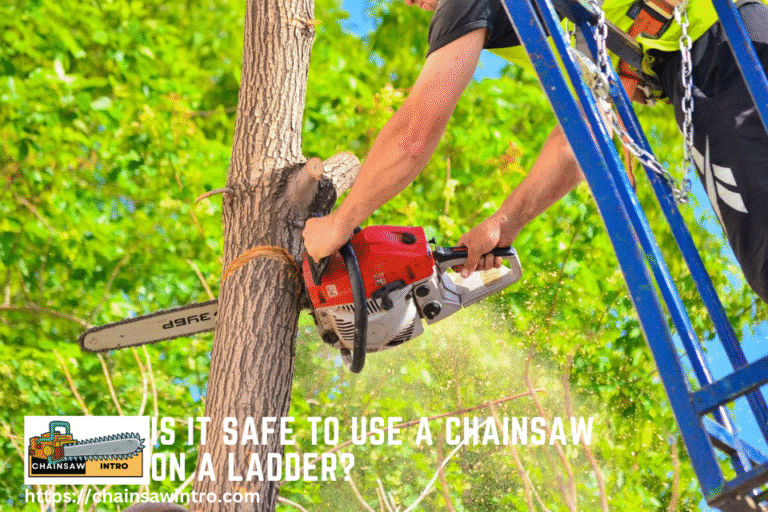Chainsaws are powerful and versatile tools, but like any equipment that involves high speeds, friction, and fuel, they come with risks. One concern that often comes up, especially in dry or wildfire-prone areas, is whether a chainsaw can actually start a fire. The short answer is yes—chainsaws can start a fire under certain conditions. However, understanding the causes, risks, and preventive measures can help you use your saw safely without contributing to fire hazards.
Can a Chainsaw Really Start a Fire?
Yes, chainsaws can start a fire, but it doesn’t happen often. Fires can be triggered by heat, sparks, or fuel leaks, particularly when working in extremely dry environments. A chainsaw’s internal combustion engine, metal chain, and bar can all produce enough friction and heat to ignite flammable materials if conditions are right.
For example, using a chainsaw during peak summer heat in a drought-stricken forest can be risky because even a small spark could ignite dry leaves, sawdust, or brush. While rare, documented cases of wildfires being started by chainsaws prove it’s not impossible.
Chainsaw WON’T START or HARD to START? Try these easy fixes!
Main Ways Chainsaws Can Start a Fire
1. Sparks from Chain Contact
When a chainsaw chain hits rocks, metal fencing, or nails hidden in wood, it can produce sparks. If those sparks land on dry grass, sawdust, or leaves, ignition is possible.
2. Overheated Chainsaw Parts
If your chainsaw chain is dull, improperly lubricated, or overtightened, it can generate extreme heat. The bar and chain oil is designed to reduce this friction, but without enough lubrication, the bar can become hot enough to ignite nearby debris.
3. Fuel Leaks and Vapors
Gas-powered chainsaws use mixed fuel (gasoline and oil), which is highly flammable. A leaking fuel tank, cracked fuel line, or improper refueling in dry areas could increase the chance of accidental fire.
4. Hot Muffler Exhaust
Chainsaws expel hot exhaust gases. If the muffler or spark arrestor comes in contact with dry brush or leaves, it could ignite. This is why most chainsaws come with a spark arrestor screen to reduce fire risk.
Statistics on Chainsaw Fire Incidents
Chainsaw fire incidents statistics reveal the severity of the risk, with approximately 36,000 chainsaw-related injuries occurring annually in the U.S., many involving fire hazards from improper use, as per NASD and CDC reports. In wildfire contexts, equipment like chainsaws contributes to about 10-15% of human-caused fires, with sparks from chainsaws igniting dry fuels. The U.S. Forest Service notes that chainsaw operations during high fire danger periods have led to numerous incidents, including the 2015 Coos Forest Protective Association report on chainsaw spark fires in dry forests. In 2024, the Wildland Fire Lessons Learned Center recorded several chainsaw-related fire starts during non-fire operations, emphasizing the need for spark arrestors and fire watches. These statistics underscore that while not the leading cause, chainsaw fire incidents can escalate quickly in dry conditions, highlighting the importance of prevention.
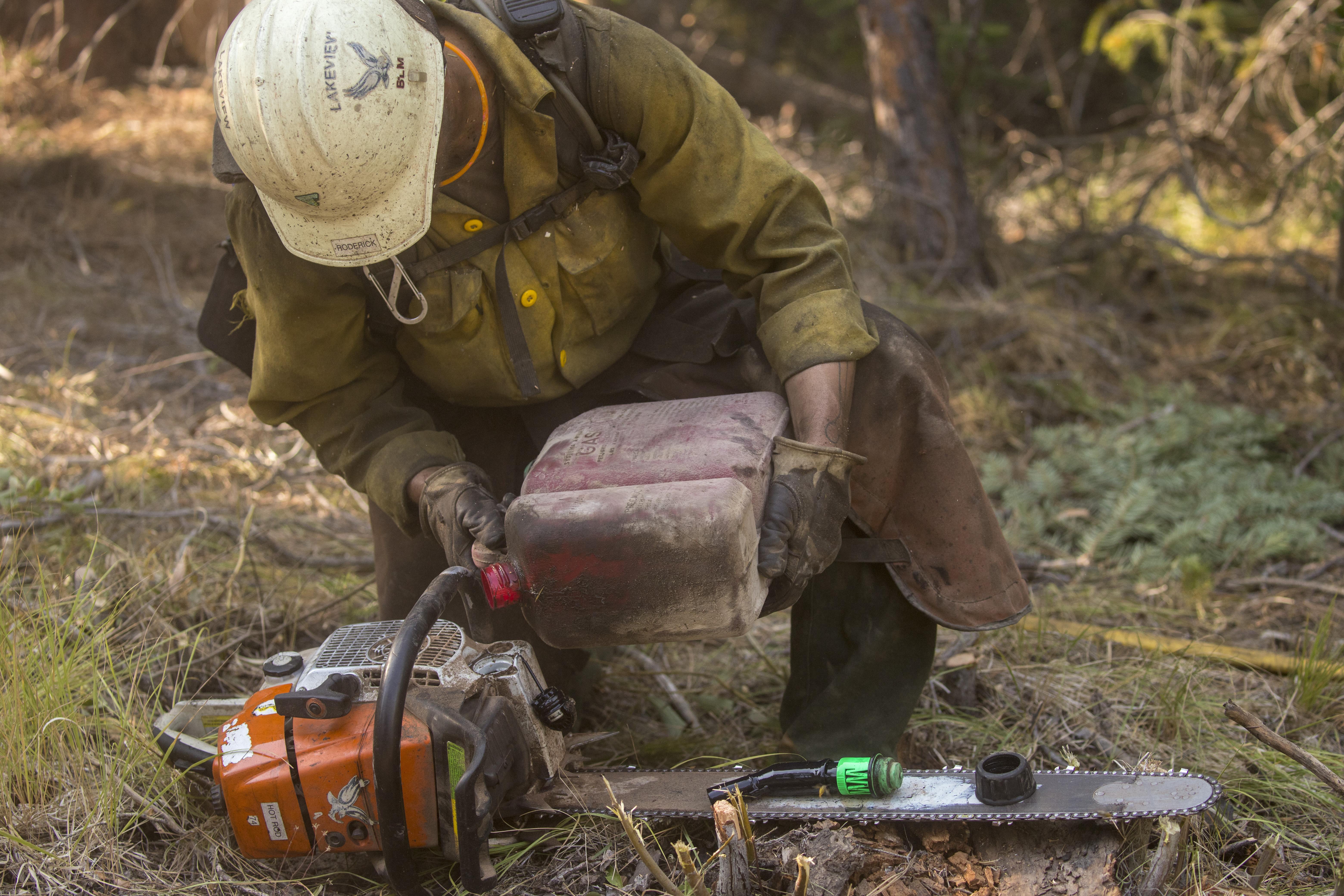
Situations Where Fire Risk Is Higher
Chainsaw fires are rare but more likely in these conditions:
- Dry summer conditions with low humidity.
- Wildfire-prone regions like California, Australia, or Mediterranean climates.
- Cutting wood near dry grass, pine needles, or sawdust buildup.
- Using a dull chain that creates extra friction and sparks.
- Fuel spills during hot weather when vapors ignite more easily.
Knowing these scenarios helps you plan better and reduce risks.
Chainsaw Spark Fire Hazards and How They Occur?
Chainsaw spark fire hazards primarily stem from the chain’s high-speed rotation (up to 3,000 feet per minute) striking hard objects, generating sparks that can ignite tinder. In dry forests, these sparks can start ground fires, especially if the saw lacks a spark arrestor—a screen that traps hot particles from the exhaust. Hot exhaust or mufflers can also ignite leaves or grass if the saw is idled on flammable material. Fuel spills during refueling, if ignited by sparks, pose another risk. Battery-powered saws reduce exhaust-related hazards but can still produce sparks from chain contact with metal, per chainsaw safety guidelines from Cornell EHS. Preventing these involves using spark arrestors, clearing work areas of debris, and refueling safely at least 10 feet from the saw.
Safety Measures to Prevent Chainsaw Fires
1. Keep Your Chainsaw Well-Maintained
Always sharpen your chain, check chain tension, and keep the bar lubricated. A well-maintained chainsaw reduces friction, preventing overheating that could spark fires.
2. Clear the Cutting Area
Before starting work, remove dry grass, sawdust piles, and other flammable debris from the area. This creates a buffer zone that minimizes fire risk.
3. Use Chainsaws During Cooler Hours
If you live in a high fire-risk area, avoid cutting wood during midday heat. Early mornings or evenings are safer since temperatures are lower and humidity is higher.
4. Check Fuel Handling
Refuel your chainsaw away from combustible materials and never overfill the tank. Keep a fuel-safe container and clean spills immediately.
5. Inspect Spark Arrestor Screens
Most gas-powered chainsaws come with a spark arrestor. Make sure it’s in good condition, not clogged, and properly installed to reduce fire hazards.
6. Keep Fire Safety Equipment Nearby
If you’re cutting in a wildfire-prone region, keep a bucket of water, shovel, or fire extinguisher within reach. Quick action can prevent a small spark from becoming a major fire.
What to Do If a Chainsaw Starts a Fire?
If your chainsaw causes a spark that ignites a small fire:
- Stop cutting immediately and shut off the chainsaw.
- Use water, dirt, or a fire extinguisher to smother flames.
- Call emergency services if the fire spreads beyond your control.
- Report the incident if it happens in a restricted fire zone.
Quick action can make the difference between a minor accident and a dangerous wildfire.
Final Thoughts | Can Chainsaws Start Fires?
While chainsaws can start fires under certain conditions, the risk is relatively low if you take proper precautions. The most common causes are sparks from metal contact, overheating, and fuel mishandling. For anyone working in dry or wildfire-prone areas, understanding these risks and applying preventive measures is essential.
If you’re concerned about fire hazards, consider investing in a battery-powered chainsaw or scheduling your cutting work during safe weather conditions. With the right knowledge and safety practices, you can enjoy the benefits of a chainsaw without putting yourself—or your property—at unnecessary risk.
Frequently Asked Questions
Can chainsaws actually start a fire?
Yes. Chainsaws can start fires if sparks, overheating parts, or fuel leaks ignite dry grass, sawdust, or leaves. While rare, the risk increases in hot and dry conditions.
What causes chainsaws to spark?
Sparks usually occur when the chain strikes metal, rocks, or nails hidden in wood. These sparks can ignite flammable debris in dry areas.
Can an electric chainsaw start a fire?
Electric chainsaws don’t use fuel or exhaust, so they are less likely to cause fires. However, they can still overheat if the chain is dull or improperly lubricated.
How can I prevent my chainsaw from starting a fire?
Keep your chainsaw sharpened, well-lubricated, and maintained, refuel safely, and clear away dry debris before cutting. Using chainsaws during cooler hours also lowers fire risk.
Do chainsaws have spark arrestors?
Yes. Most gas-powered chainsaws include a spark arrestor screen in the muffler to prevent hot sparks from escaping and igniting fires.
What should I do if a fire starts while using a chainsaw?
Immediately shut off the chainsaw, smother the flames with water, dirt, or a fire extinguisher, and call emergency services if it spreads.
Can a Chainsaw Start a Forest Fire?
Yes, a chainsaw can start a forest fire. If the chain on the saw is not properly maintained, it can create sparks that can ignite dry leaves and branches. In addition, the heat from the engine can also cause fires if the saw is used in an area with high grass or brush.
William C. Bozeman is a seasoned chainsaw expert and outdoor power tool enthusiast with over a decade of hands-on experience in tree cutting, forestry, and property maintenance. Having worked with leading chainsaw brands like Stihl, Husqvarna, and Oregon, Bozeman shares practical knowledge, safety tips, and honest reviews to help homeowners, DIYers, and professionals make informed decisions.
